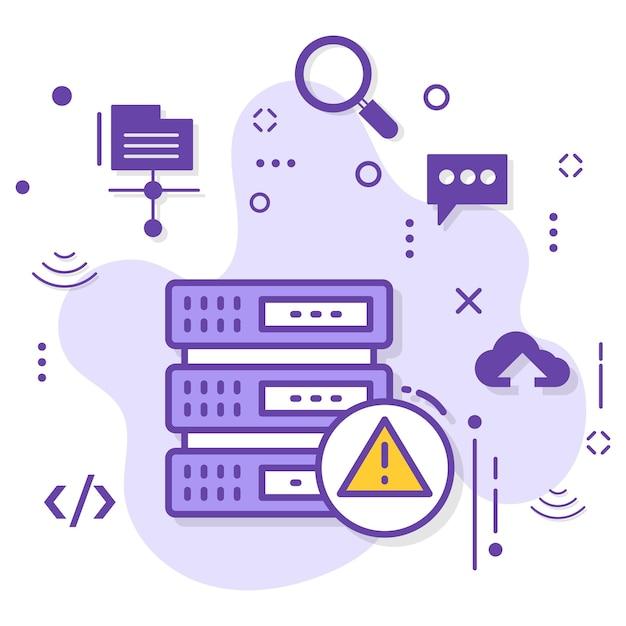Are you tired of sorting through copious amounts of data? Do you struggle to make sense of the numbers and figures that your business generates? If so, you’re not alone. Many businesses are finding themselves inundated with data, but without the necessary insights to use it effectively.
This is where embedded analytics comes into play. By seamlessly integrating analytics directly into your software or applications, embedded analytics allows for real-time monitoring and analysis of data. Not only does this save time and effort, but it also provides valuable insights that can be leveraged to make better business decisions.
But what exactly is embedded analytics, and how does it work? In this blog post, we’ll explore the ins and outs of embedded analytics, including examples of it in action, case studies of successful implementations, and the difference between embedded analytics and traditional business intelligence.
We’ll also examine the benefits of using embedded analytics, including improved efficiency, increased accuracy, and enhanced decision-making capabilities. From embedded analytics in Tableau to embedded analytics in ServiceNow, we’ll take a deep dive into the world of embedded analytics to help you better understand why it’s essential for your business.
So if you’re ready to learn more about embedded analytics and how it can help take your business to the next level, read on.
Embedded Analytics Examples: How You Can Better Leverage Your Data
Do you want to make better decisions based on your data? You’ve probably heard about embedded analytics. However, do you know how it can make your data work better for you? Here are several examples of how embedded analytics can help you out:
1. Visualizing Your Data
Data is much more insightful when represented visually. With embedded analytics, you can take your data and make it interactive, intuitive, and more compelling. You can use this to monitor metrics and KPIs, track progress on projects and goals, or analyze data to find trends.
2. Integrating Analytics into Your Operations
Your data shouldn’t just sit in a silo; you should be able to access it in real-time. By integrating analytics into your operations, you can quickly make informed decisions. For example, you can automate alerts for threshold breaches or identify inefficient processes and make the needed changes.
3. Creating Actionable Insights
Embedded analytics can help you understand why things are happening and help you decide on the best course of action. You can create custom dashboards and reports, which provide insights and recommendations on how to proceed. For instance, you can optimize resource utilization, identify revenue opportunities, and build future predictions.
4. Driving User Engagement
By providing more engaging, interactive, and data-driven applications, embedded analytics can drive user engagement. In turn, your users are more likely to keep coming back, which can result in better adoption rates and improved user satisfaction.
5. Enhancing the Customer Experience
Finally, with embedded analytics, you can also enhance the customer experience. By providing data and insights directly to your customer, they can see how you’re delivering value and where/how they can improve. This enhances trust and prioritizes the customer’s needs.
In summary, embedded analytics can make it more convenient for you to leverage your data and support better decision-making across all parts of your business. From visualizing results to building actionable insights, analytics can transform your business.
Embedded Analytics Tableau
In this section, we will dive deeper into the subtopic of embedded analytics using Tableau. Tableau is a powerful data visualization tool that enables you to create interactive dashboards and reports. With Tableau, you can seamlessly embed analytics into your application, helping you gain insights and make data-driven decisions.
What is Tableau
Tableau is a powerful business intelligence and data visualization tool that enables you to create interactive reports and dashboards. With Tableau, you can connect to your various data sources and transform them into impactful visualizations that are easy to understand. You can even publish your dashboards and reports to Tableau Online or Tableau Server for easy sharing and collaboration.
Benefits of Embedded Analytics with Tableau
Embedded analytics with Tableau offers several benefits for businesses and organizations. Firstly, it enables you to gain insights from your data in real-time, helping you make informed, data-driven decisions. Secondly, it helps you save time and resources by eliminating the need to switch between multiple applications. You can easily embed Tableau dashboards and reports directly into your existing applications, and your users can access them seamlessly. Thirdly, it helps you enhance user experience by providing visually appealing dashboards and reports that are easy to interpret.
Use Cases of Embedded Analytics with Tableau
There are several use cases of embedded analytics with Tableau. For example, imagine you are a sales manager, and you want to monitor your team’s performance in real-time. You can embed a Tableau dashboard into your CRM application, enabling you to track your team’s performance and identify trends in sales data. Another example is for HR managers who want to monitor employee engagement. You can embed a Tableau dashboard into your HR portal, providing you with insights into employee engagement and satisfaction.
In conclusion, embedded analytics with Tableau is a powerful tool for businesses and organizations. It enables you to gain insights from your data in real-time, save time and resources, and enhance user experience. By using Tableau, you can easily embed analytics into your existing applications and make data-driven decisions with ease.
Why Use Embedded Analytics
Are you tired of switching between multiple platforms and logging in to different dashboards to get your data insights? Don’t worry; you’re not alone. Most businesses are faced with this challenge, but the good news is they can avoid this by using embedded analytics.
Enhanced User Experience and Time Efficiency
By embedding analytics into the same platform as your application or website, you provide your users with a seamless experience. They don’t have to log in to other portals, which means they can access and analyze data within the same interface. This saves time and effort and makes data management more efficient.
Personalized Dashboards
With embedded analytics, users can customize their dashboards to fit their unique needs. They can filter and analyze data according to their preferences and priorities. By having a personalized dashboard, users can work more efficiently, respond to issues faster, and make informed decisions quickly.
Streamlined Decision-making
Embedded analytics enables businesses to make data-driven decisions on the go. By having real-time data insights, they can identify trends, opportunities, and threats and respond timely. This helps them to make informed decisions and to stay ahead of the competition.
Competitive Advantage
In today’s data-driven world, being able to make informed decisions quickly gives businesses a competitive edge. Embedded analytics enables businesses to identify opportunities, mitigate risks, and respond to issues faster than their competitors. Providing your customers with real-time data insights can also enhance your business’s reputation and attract more customers.
To sum it up, Embedded analytics provides users with a seamless experience, saves them time, and provides them with personalized controls to help them work more efficiently. By having real-time data insights within easy reach, businesses can make informed decisions quickly and stay ahead of the competition. By using embedded analytics, your business can gain a competitive edge and improve customer satisfaction.
Embedded Analytics Case Study
Embedded analytics is a powerful tool that allows companies to gain actionable insights from their data in real-time. In this section, we will explore a case study that demonstrates the benefits of embedded analytics.
Business Challenge
Our client, a leading e-commerce company, was struggling with a high cart abandonment rate. A significant portion of their website visitors would add items to their cart but wouldn’t complete the checkout process. The client wanted to understand why this was happening and what they could do to reduce the abandonment rate.
Solution
We implemented an embedded analytics solution that helped the client gain real-time insights into their customers’ behavior. Using this solution, the client was able to track the customer journey, analyze cart abandonment patterns, and determine the root cause of the problem.
Results
The embedded analytics solution helped the client identify several issues that contributed to the high cart abandonment rate. One of the issues was the lack of payment options. Customers had to navigate through several payment options before completing the checkout process, which resulted in frustration and cart abandonment. Based on these insights, the client revamped their payment process and streamlined it to provide a smoother checkout experience.
The client saw significant results after implementing the solution. The cart abandonment rate decreased by 15%, resulting in an increase in revenue by 10%. The client was thrilled with the results and decided to implement embedded analytics throughout their organization.
In conclusion, this case study demonstrates the power of embedded analytics in providing actionable insights that can drive business growth. By gaining real-time insights, companies can make data-driven decisions that can help reduce costs, increase revenue, and improve customer satisfaction.
How Does Embedded Analytics Work
Embedded analytics refers to the integration of data analytics tools and capabilities into existing business software applications. They seamlessly blend into an organization’s existing workflow, enabling better decision-making, without the need for external data analysis tools.
Data Collection
The first step in embedded analytics is data collection. The application collects data from various sources, including CRM systems, ERPs, BI systems, and even social media feeds. The data is then consolidated and stored in the application’s database for analysis.
Data Analysis
The second step in embedded analytics is data analysis. The application uses data analysis tools, such as dashboards and reports, to analyze the data. The analysis reveals insights, trends, and patterns to help organizations make data-driven decisions.
Data Visualization
The third step in embedded analytics is data visualization. The application uses data visualization tools, such as charts, graphs, and maps, to present data insights in visual formats. This makes it easier for users to interpret the data and identify the key insights.
Accessibility
The fourth step in embedded analytics is accessibility. The application must make data insights and reports easily accessible to any user at any time. This means providing secure access to data and insights from a variety of devices and platforms, including mobile.
Integration
The final step in embedded analytics is integration. The application must integrate with other business systems, such as CRM and ERP, to make it easier for users to access and analyze data. This also means that the application must be able to easily connect to data sources to retrieve the latest data.
In conclusion, embedded analytics provides organizations with a powerful way to gain insights into their data and make data-driven decisions. By seamlessly integrating data analytics tools and capabilities into existing business software applications, organizations can improve decision-making, optimize workflows, and drive growth.
Embedded Software Testing Examples
Embedded software testing refers to the process of testing software that is embedded in hardware devices such as consumer electronics, medical devices, and industrial machines. This type of testing is critical as it helps to ensure that the embedded software functions correctly and reliably, which is essential for the safety and security of the end-users.
Automated Testing
One of the most common types of embedded software testing is automated testing. This involves using specialized software tools to write test cases and scripts that can be executed automatically on the embedded software. For example, if you are testing a medical device that has an embedded software interface, you can create a test case that simulates a user entering specific data into the device. Once the test case is executed, the software tool can automatically verify that the device responds to the input correctly.
Code Coverage Testing
Another type of embedded software testing is code coverage testing. This involves analyzing the embedded software code to determine how much of it has been tested. Code coverage testing helps to identify areas of the software that have not been tested adequately, allowing developers to focus their testing efforts on those areas.
Debugging and Error Diagnosis
Embedded software testing also involves debugging and diagnosing errors in the code. In this phase of testing, developers use software tools to identify any bugs or defects in the embedded software. Once the bugs are identified, developers can work on fixing them to ensure that the software functions correctly.
Example Scenario
For example, let’s say you are testing a smart lock device that is commonly used in households. You can use automated testing to simulate different scenarios such as trying to lock the door without the correct passcode, jamming the lock mechanism, or using a remote app to unlock or lock the door. Code coverage testing can help identify any poorly tested sections of code, and the debugging phase can help fix any bugs or glitches in the lock’s embedded software.
In conclusion, embedded software testing is a crucial aspect of software development that ensures the safety and reliability of the end-product. Different testing methods such as automated testing, code coverage testing, and debugging and error diagnosis are used to test the embedded software thoroughly. By using these methods, developers can ensure that the embedded software functions correctly, providing a better user experience.
Embedded Analytics Examples in ServiceNow
ServiceNow is a cloud-based platform that offers multiple IT management services. It provides a range of applications for IT, customer service, HR, security operations, and more. It also incorporates embedded analytics that enables users to analyze and visualize data from various applications. With embedded analytics in ServiceNow, companies can monitor and measure their performance, make informed decisions, and improve their operations. Here are some embedded analytics examples in ServiceNow:
Reports and Dashboards
ServiceNow has a robust reporting engine that enables users to create and customize reports and dashboards. With embedded analytics, users can access real-time data and insights that help them make data-driven decisions. They can create reports and dashboards that provide insights into ITSM, HR, customer service, security incidents, and more. These reports can be shared with team members, executives, and other stakeholders, making it easier to monitor key metrics and KPIs.
Performance Analytics
Performance Analytics is a ServiceNow application that provides a range of analytics tools for monitoring and measuring performance. With embedded analytics, users can gain insights into various processes, applications, and teams. They can track metrics such as incident resolution time, SLA compliance, customer satisfaction, and more. Performance Analytics also provides a range of dashboards, scorecards, and advanced analytics tools to help users drill down into data and identify trends, patterns, and opportunities.
Predictive Intelligence
ServiceNow also offers predictive intelligence capabilities that enable users to leverage machine learning and predictive analytics. With embedded analytics, users can leverage predictive models for various applications, such as ITSM, HR, and security. Predictive intelligence can help businesses identify potential problems before they occur, automate some decision-making processes, and identify opportunities for improvement.
Natural Language Processing
ServiceNow’s natural language processing (NLP) capability allows users to interact with the platform using natural language. With embedded analytics, users can leverage NLP to ask questions and receive instant answers. For instance, they can ask, “What is the average resolution time for high-priority incidents this month?” and get instant answers based on the data gathered in ServiceNow.
In summary, embedded analytics in ServiceNow is a powerful tool for monitoring and measuring performance, improving decision-making, and identifying opportunities for improvement. By incorporating these capabilities into ServiceNow, companies can improve their operations and gain a competitive advantage.
Embedded Analytics vs Business Intelligence
Embedded analytics and business intelligence are two buzzwords that we often hear in the world of data analysis, but what do they actually mean? In this section, we’ll explore the key differences between embedded analytics and business intelligence.
What is Embedded Analytics
Embedded analytics refers to the integration of analytical capabilities within an existing software application. This means that the data analysis tools are seamlessly woven into the user interface of a particular software application, which enables users to get real-time insights without having to switch to a different application.
For example, if you’re using an e-commerce application and the software includes a dashboard that provides real-time sales metrics and customer insights, then you’re using embedded analytics.
What is Business Intelligence
Business intelligence, on the other hand, is a broader term that encompasses the entire process of collecting, analyzing, and presenting data to uncover insights, patterns, and trends. Business intelligence tools are often used by analysts or data scientists who are responsible for analyzing large amounts of data from different sources to uncover insights that can inform business decisions.
Unlike embedded analytics, business intelligence tools are often standalone applications that require users to perform data imports, integrations, and cleansing before any analysis can take place.
Key Differences: Embedded Analytics vs Business Intelligence
Despite their similarities, there are several key differences between embedded analytics and business intelligence. Some of these differences include:
Market Demographics
Embedded analytics is generally marketed toward end-users who are looking for quick insights and reports that can help them make better decisions in real-time. Business intelligence, on the other hand, is often marketed toward data analysts, data scientists, and IT professionals who need to perform sophisticated analysis on large datasets.
Data Sources and Integrations
Embedded analytics often relies on a single data source from within a specific software application, such as CRM data from a sales application. Business intelligence tools, however, can integrate data from multiple sources, including databases, spreadsheets, and third-party data sources.
Analytical Capabilities
Embedded analytics typically offers limited analytical capabilities because they are designed for end-users who may not have technical skills. Business intelligence tools, on the other hand, provide advanced features such as predictive analytics, statistical modeling, and data mining.
In conclusion, business intelligence and embedded analytics are both powerful tools that can provide organizations with valuable insights to drive better decision-making. However, they differ in terms of their target audience, data sources, and analytical capabilities. Ultimately, the choice between these two options depends on the specific needs of each organization and the level of analytical sophistication required.
What is the difference between traditional analytics and embedded analytics
If you’re new to data analytics, it’s crucial to understand the difference between traditional analytics and embedded analytics.
Traditional Analytics
Traditionally, businesses use data analytics to analyze past performance and gain insights from historical data. This method involves collecting data, analyzing it, and visualizing the results. The process is time-consuming, and the results are often presented in reports and spreadsheets. Traditional analytics are usually conducted by a data analyst or data scientist using a dedicated analytics tool.
Embedded Analytics
Embedded analytics, on the other hand, integrates analytics within an application or website, which allows users to view real-time and relevant data without leaving their workflow. With embedded analytics, people who are not data analysts or scientists can access data insights and make informed decisions without needing to learn a new tool. This type of analytics offers significant value to businesses as it leads to faster decision-making and more informed choices.
Key Differences
The main differences between traditional and embedded analytics are the user experience and the use-case scenarios. Traditional analytics are best suited for analyzing historical data and require a specialized skill set to perform data analysis, while embedded analytics provide real-time insights integrated with application or website workflows, with little to no expertise required. Embedded analytics also allow users to act on the insights immediately, while traditional analytics requires a dedicated team to analyze the data.
To conclude, as businesses become more data-driven, the need for analytics continues to grow. Choosing between traditional analytics and embedded analytics depends on the use-case, user experience, and analysis goals. While traditional analytics require specific expertise, embedded analytics can provide real-time insights that can fuel faster decision-making without the need to leave the workflow.



